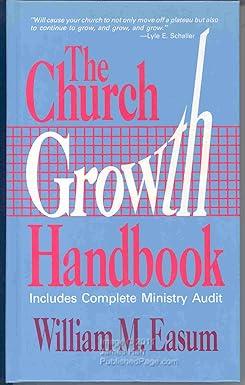Question
Nicole Henderson employs two workers in her wedding cake bakery. The first worker, Fiona, has been making wedding cakes for 20 years and is paid$40
Nicole Henderson employs two workers in her wedding cake bakery.
The first worker, Fiona, has been making wedding cakes for 20 years and is paid$40 per hour. The second worker, Wally, is less experienced and is paid $25 per hour. One wedding cake requires, on average, 8 hours of labour. The budgeted direct labour quantities for one cake are as follows:
Quantity
| Fiona | 4 hours |
| Wally | 4 hours |
| Total | 8 hours |
That is, each cake is budgeted to require hours of direct manufacturing labour, composed of 50% of 's labour and 50% of 's, although sometimes works more hours on a particular cake and less, or vice versa, with no obvious change in the quality of the cake.
During the month of May, the bakery produces 52 cakes. Actual direct manufacturing labour costs are as follows:
Fiona (191 hours) $ 7,640
Wally (227 hours) 5,675
Total actual direct labour cost $ 13,315
Requirement 1. What is the budgeted cost of direct manufacturing labour for 52 cakes?
Select the formula and enter the amounts to calculate the budgeted cost of direct labour for 52 cakes.
Requirement 2. Calculate the total direct manufacturing labour price and efficiency variances.
Begin by selecting the formula and enter the amounts to calculate the total direct labour price variance. Identify each variance as either favourable (F) or unfavourable (U). (For variances with a $0 balance, make sure to enter "0" in the appropriate field. If the variance is zero, do not select a label. Abbreviations used: Act. = Actual, Budg. = Budgeted, Qty. = Quantity, Var. = Variance.)
Now select the formula and enter the amounts to calculate the total direct labour efficiency variance. Identify each variance as either favourable (F) or unfavourable (U). (For variances with a $0 balance, make sure to enter "0" in the appropriate field. If the variance is zero, do not select a label. Abbreviations used: Act. = Actual, Budg. = Budgeted, Qty. = Quantity, Effic. = Efficiency, Var. = Variance.)
Requirement 3. For the 52 cakes, what is the total actual amount of direct manufacturing labour used? What is the actual direct manufacturing labour input mix percentage? What is the budgeted amount of Fiona's and Wally's labour that should have been used for the 52 cakes? (Round the percentage amounts to the nearest tenth, X.X%)
Requirement 4. Calculate the total direct manufacturing labour mix and yield variances. How do these numbers relate to the total direct manufacturing labour efficiency variance? What do these variances tell you?
Begin by selecting the formula and entering the amounts to calculate the total direct labour mix variance. Identify each variance as either favourable (F) or unfavourable (U). (Enter any percentages in decimal format to three decimal places, 0.XXX. Round your answer to the nearest whole dollar. Abbreviations used: A$ of DL input = Actual price of direct labour input, ADL mix % = Actual direct labour input mix percentage, ATQ inputs used= Actual total quantity of all direct labour inputs used, B$ of DL input = Budgeted price of direct labour input, BDL mix % = Budgeted direct labour input mix percentage, BTQ inputs allowed = Budgeted total quantity of all direct labour inputs allowed for actual output, Mix var. = Direct labour mix variance for each input.)
Next select the formula and enter the amounts to calculate the total direct labour yield variance. Identify each variance as either favourable (F) or unfavourable (U). (Enter any percentages in decimal format to three decimal places, 0.XXX. Round your answer to the nearest whole dollar. Abbreviations used: A$ of DL input = Actual price of direct labour input, ADL mix % = Actual direct labour input mix percentage, ATQ inputs used= Actual total quantity of all direct labour inputs used, B$ of DL input = Budgeted price of direct labour input, BDL mix % = Budgeted direct labour input mix percentage, BTQ inputs allowed = Budgeted total quantity of all direct labour inputs allowed for actual output, Yield var. = Direct labour yield variance for each input.)
How do these numbers relate to the total direct labour efficiency variance?
The sum of the total direct labour efficiency price yield variance and the total direct labour efficiency mix price variance equal the total direct labour efficiency mix price yield variance. Part 8 What do these variances tell you? The favourable unfavourable mix variance arises from using less more of the costlier labour than the budgeted mix. The efficiency mix price yield variance indicates that the cakes required less more total hours than expected for the production of 52 cakes. It is likely that Fiona Wally worked more slowly than Fiona Wally , which caused the unfavourable yield variance.
Expert Answer
Step by Step Solution
There are 3 Steps involved in it
Step: 1

Get Instant Access to Expert-Tailored Solutions
See step-by-step solutions with expert insights and AI powered tools for academic success
Step: 2

Step: 3

Ace Your Homework with AI
Get the answers you need in no time with our AI-driven, step-by-step assistance
Get Started


